The world is changing rapidly, driven by technological and environmental factors, and these shifts could have profound long-term implications for investors. Our thematic framework can help navigate the evolving investment landscape.
- Since the iPhone launch in 2007 and the global financial crisis in 2008, our daily lives and the financial markets have never been the same again. The former kickstarted the modern digitally connected world, while the latter facilitated an exponential age of disruptive innovation funding with the era of ‘free money’ and ultra-low borrowing rates.
- Our world is changing even more rapidly today. Apple launched its watch in 2015 and by 2019 was selling more than the Swiss watch industry. TikTok took just three years to reach 1 billion monthly users, faster than Facebook and Instagram’s already impressive eight years. In less than a decade of founding, Coinbase reached a USD 50 billion valuation and Snowflake achieved a USD 100 billion valuation in public markets. COVID accelerated e- commerce and remote work unimaginably in a year.
- This decade, we believe multiple disruptive innovations are likely to further increase the pace of change. Our thematic investing framework looks at long-term structural changes, and can help investors navigate the future and find tomorrow’s winners.
Structural trends can be extremely powerful in the long term, as we have seen over the past decade. For example, since the iPhone kickstarted the modern mobile digital era in 2007, the technology-heavy Nasdaq 100 Index has risen by more than seven times, easily outpacing broader equity markets and powering through major global crises as if they were just small speed bumps. The performance of some technology stocks has been even more spectacular – Netflix shareholders have enjoyed total returns of more than 16,000% since 2007.
Innovation is not stalling – it is getting easier, faster, global and more disruptive as a growing ecosystem of angel, venture capital and private equity investors incubate and scale start-ups at a higher pace every passing year, making them ready for global domination. The flip side of disruptive innovation is the likely drag for old-economy industries.
We are launching our thematic framework which is our guide or approach to navigating these changes (figure 1). Thematic investing involves assessing the many long-term structural shifts in a rapidly changing world and finding investments that provide exposure to tomorrow’s likely winners. We have already been using a thematic approach to invest in some innovation and sustainable themes. But with so many disruptions and profound changes in multiple areas on the horizon, we believe it is vital to increase investment exposure to a broad range of innovations and decrease exposure to the old economy in order to preserve and enhance wealth.

Since the iPhone kickstarted the modern mobile digital era in 2007, over 5 billion people have started using smartphones, connecting to the digital world and embracing new services. But change is not stopping – an additional 2 billion or more users could join the digital ecosystem by 2030 via more powerful devices. We see many other disruptive innovations too. These changes could bring new opportunities for some of today’s leading companies, spawn a new batch of winners and also disrupt many old economy industries. The gap between the few winners and many also-rans could widen this decade as disruptive innovation and digital ecosystems take control of markets (figure 2).
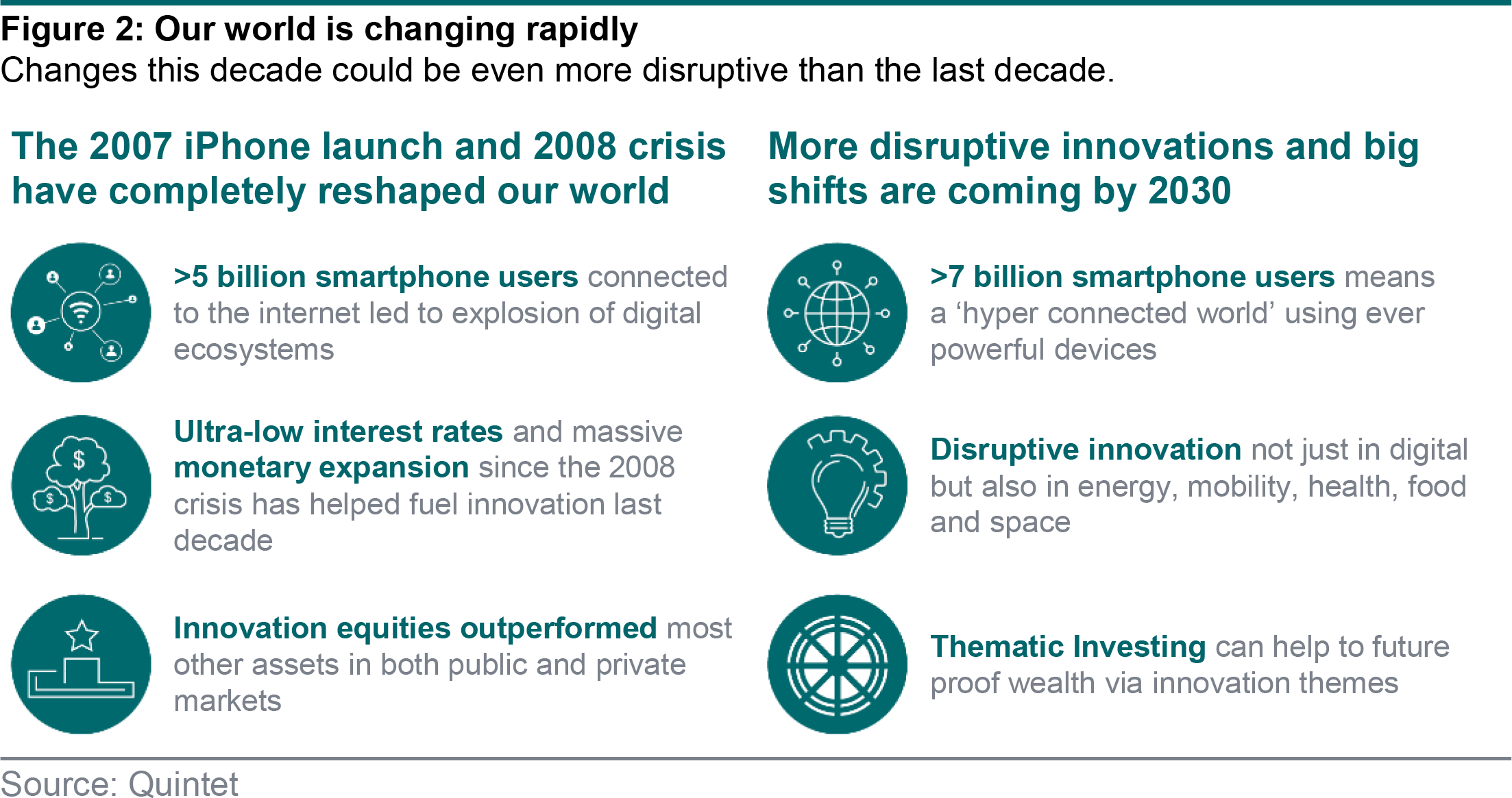
Financial markets can at times focus on short-term topics like quarterly results, price volatility and inflation, but we believe equity returns can be more heavily influenced by long-term trends and innovation cycles (e.g. smartphone or cloud adoption). We see the possibility of many more innovation cycles and shifts this decade across a range of themes, which we believe could drive future equity returns (figure 3).
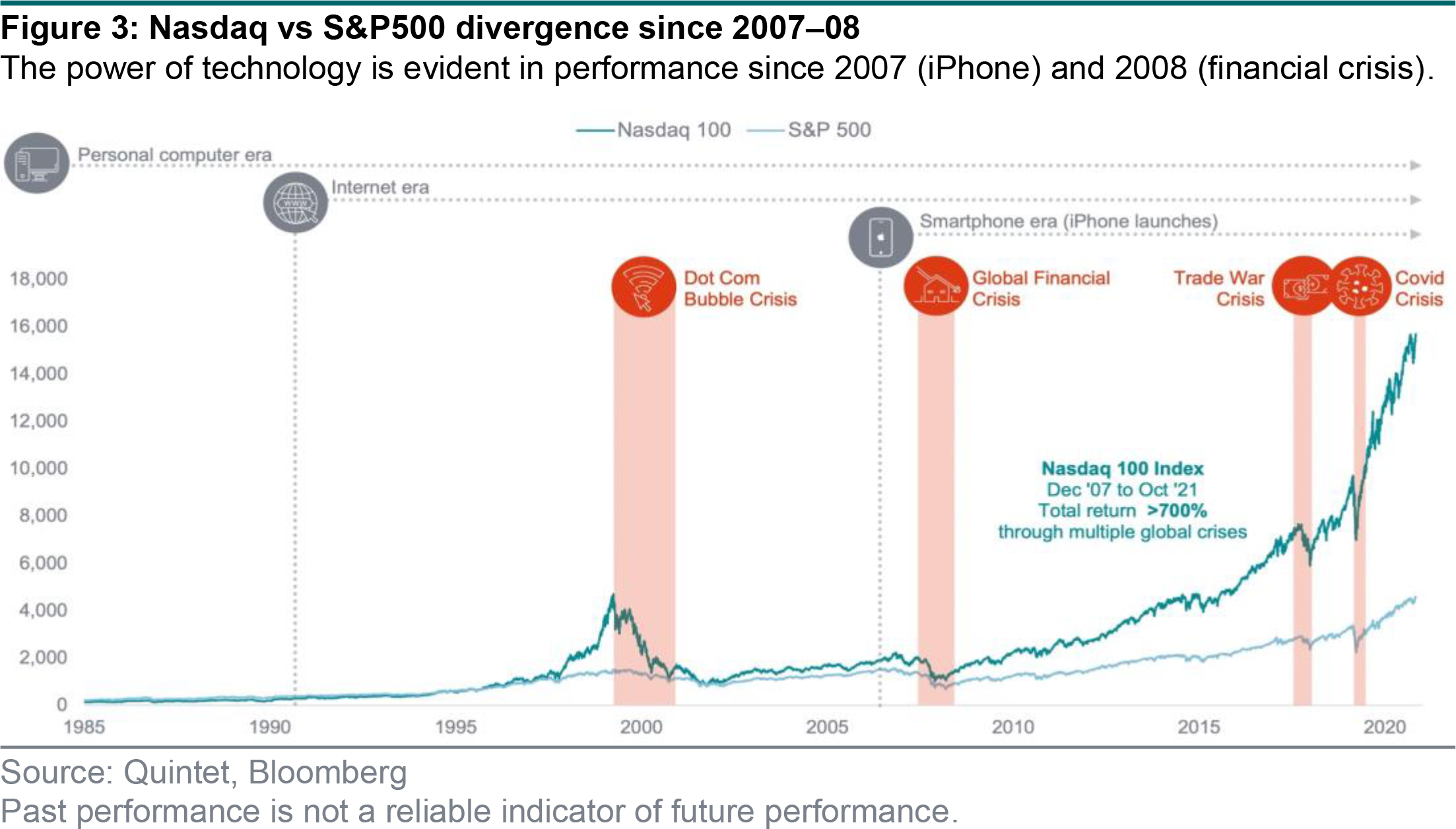
Thematic investing allows investors to think about the future in our changing world. The objective is to invest in industries and companies that are expected to become structural winners. Tomorrow’s winners are likely to be the businesses that anticipate and understand how the future will be drastically different from the past. They can not only be the innovators of new products or services but also work towards solving major problems like climate change or an ageing population.
Themes are secular growth trends expected to exponentially grow over multiple years. The objective of thematic investing is to (1) discover distinct and identifiable long-term structural trends through research, as well as refresh such ideas in a changing world; and (2) enable investing in thematic baskets of companies that are driving and participating in those trends, and which could be expected to be long-term winners (figure 4).
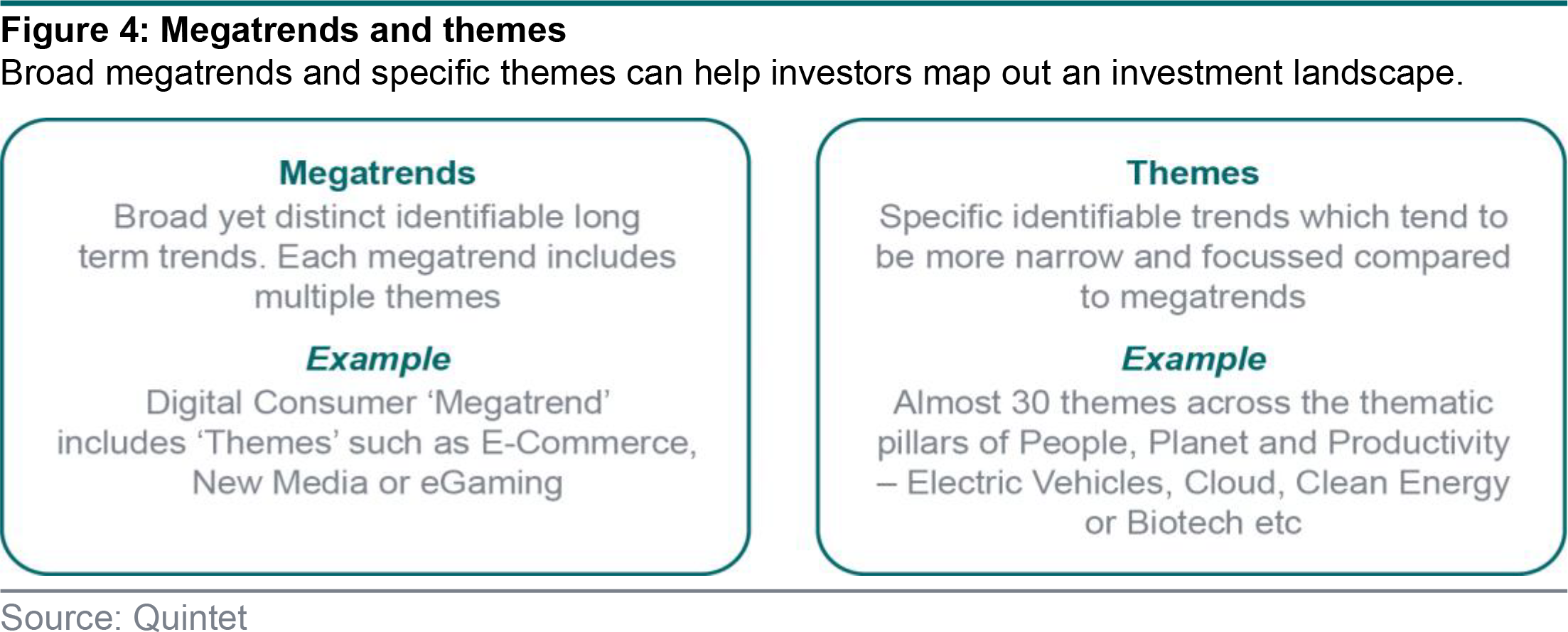
S-curve themes include those trends whose effects tend to be recognised but are still underappreciated by the wider market. Typically, s-curve themes are commercially or conceptually established and are ready for scale-up in the long term. Usually, they are investable via listed equities. Moonshot themes are not yet fully commercially established but, if successful, could be highly impactful and disruptive. Usually, companies involved in moonshot themes are private.
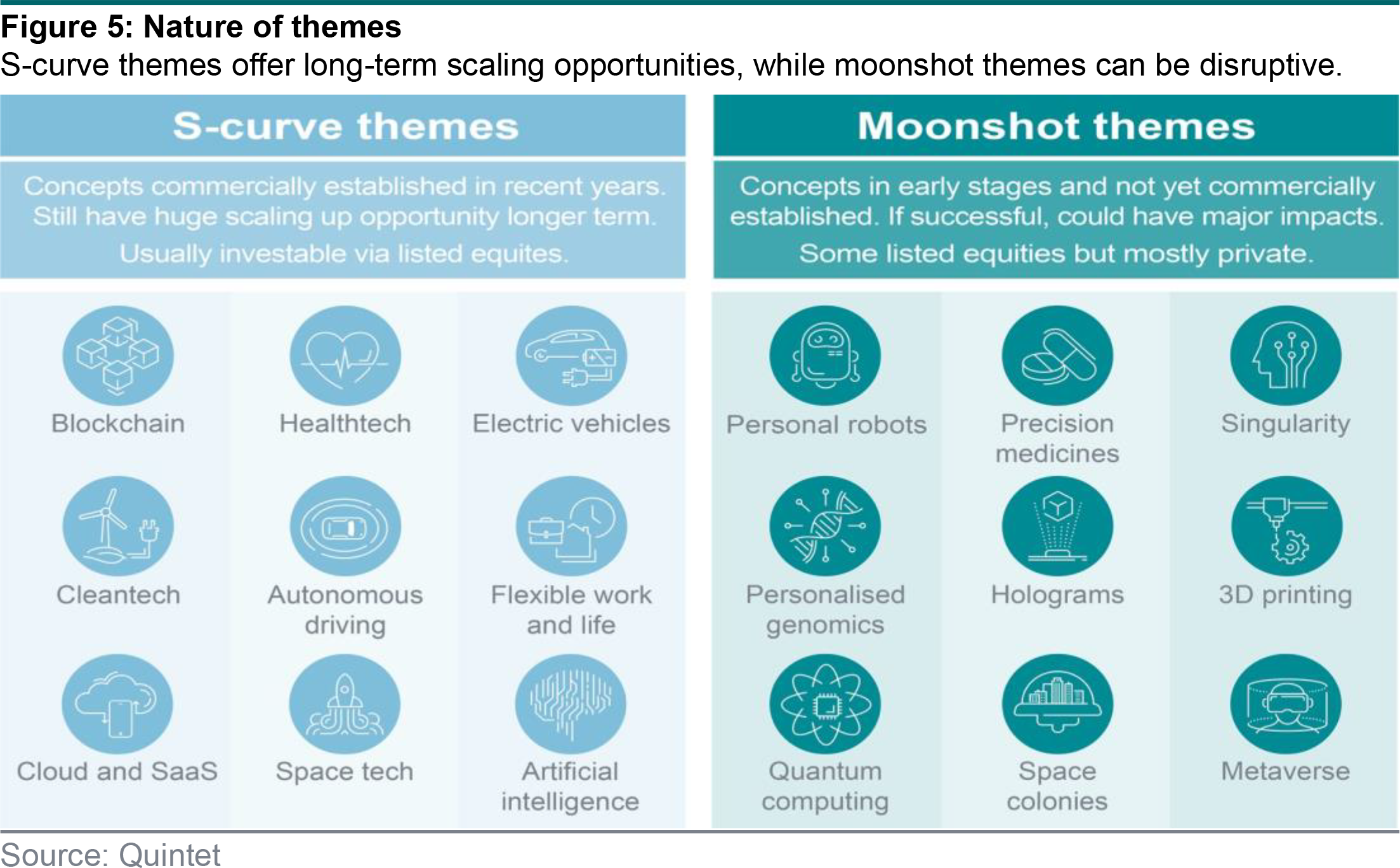
Thematic investing allows us to think differently by considering structural changes, developing a long-term approach and benefiting from above average growth compared to traditional investing, ultimately helping us adapt in a rapidly changing world.
We think many big shifts are likely this decade across our thematic pillars of people, the planet and productivity (figure 6). Within the people theme, the big trends are about digitally connected groups, demographics and income levels. Under the planet category, it’s about scaling up existing clean technologies and investing in new solutions for humanity’s urgent climate change challenge. When it comes to productivity, we are excited about advancements in foundational technologies such as artificial intelligence, quantum computing and genomics, but also the explosion of data and advances in robotics and automation.
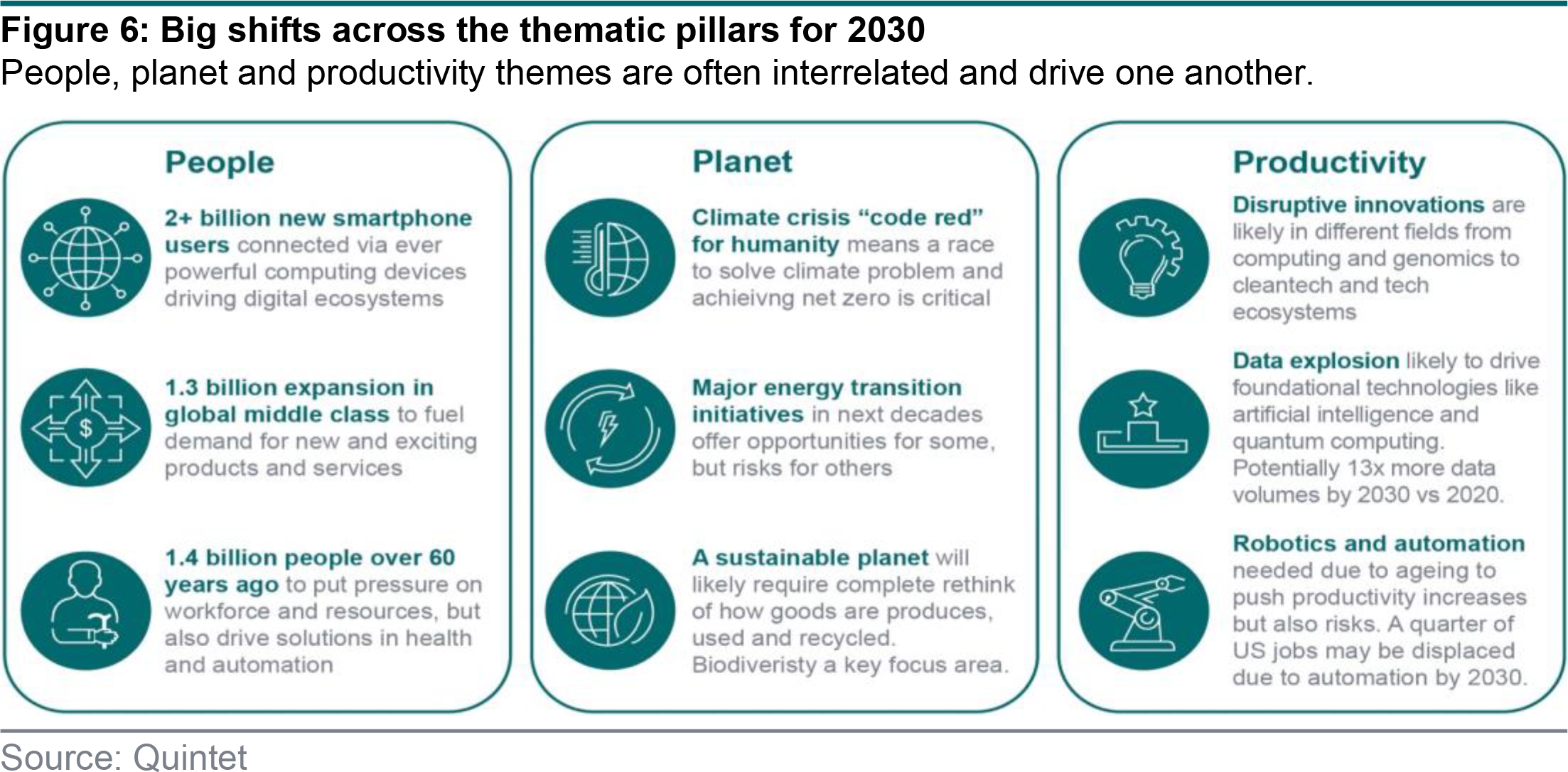
We are using a new proprietary quantitative scorecard to rank around 30 global themes. Anticipating future trends and identifying related winners invariably involves some element of judgment and forecasting uncertainty. However, we think a data-driven approach can help limit biases and augment qualitative thematic research. Our proprietary thematic scoring framework considers factors like growth, margin, size, performance, valuation and expectations for about 900 companies globally that exhibit strong thematic characteristics. We consider longer-term consensus forecasts for our analysis.
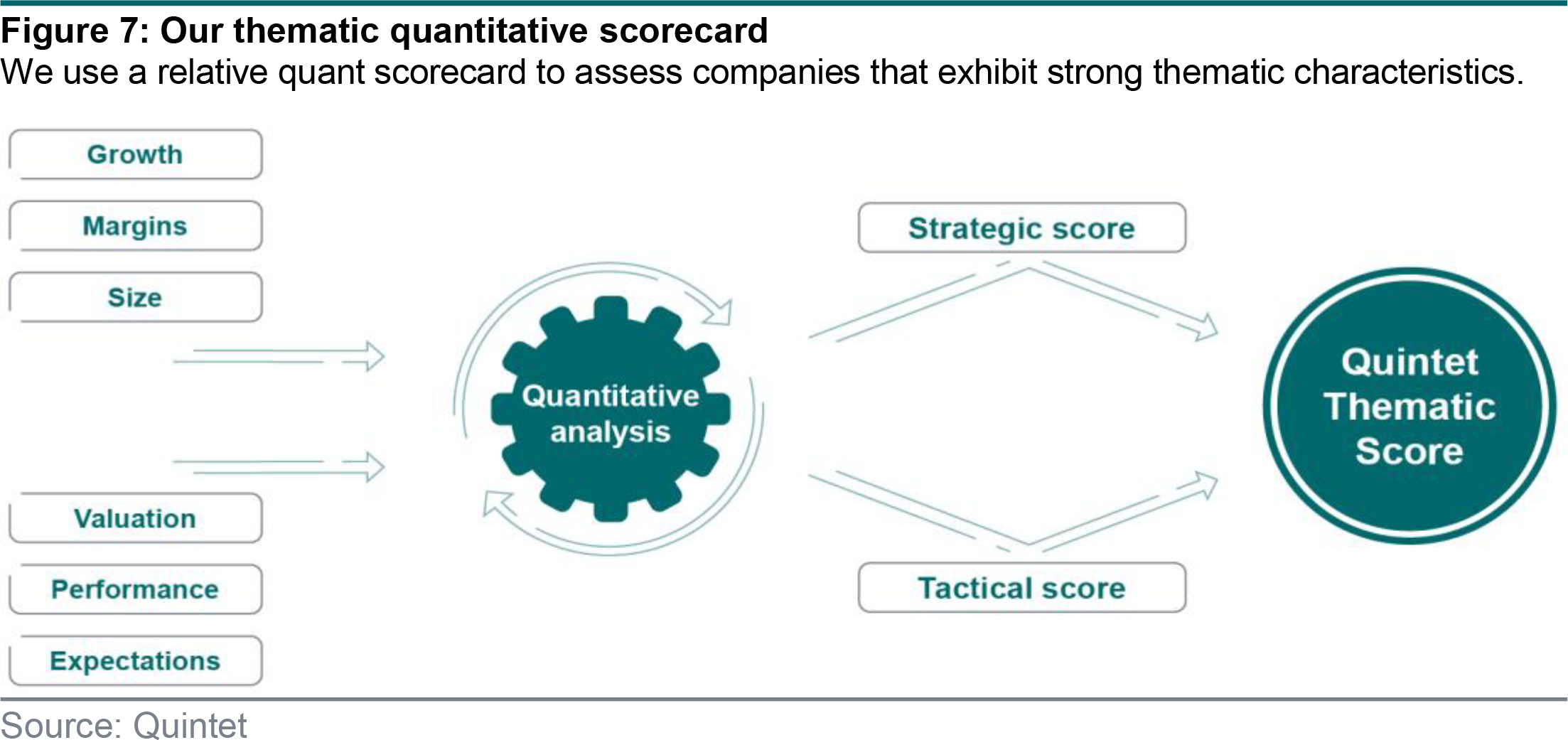
Our thematic quantitative scorecard is designed to enable relative comparison of companies that exhibit strong thematic characteristics. Company scores are derived using aggregated decile ranks for the aforementioned factors (range 0 to 10). The company scores are aggregated to obtain each theme’s score. Each theme’s score can then be compared against other themes (figures 8 and 9) in order to assess its relative investment appeal at a given time. In our scorecard, the most appealing themes are new media, eGaming, processing power, flexible work and e-commerce, while the less appealing themes are waste, water, hydrogen, 3D printing and education.
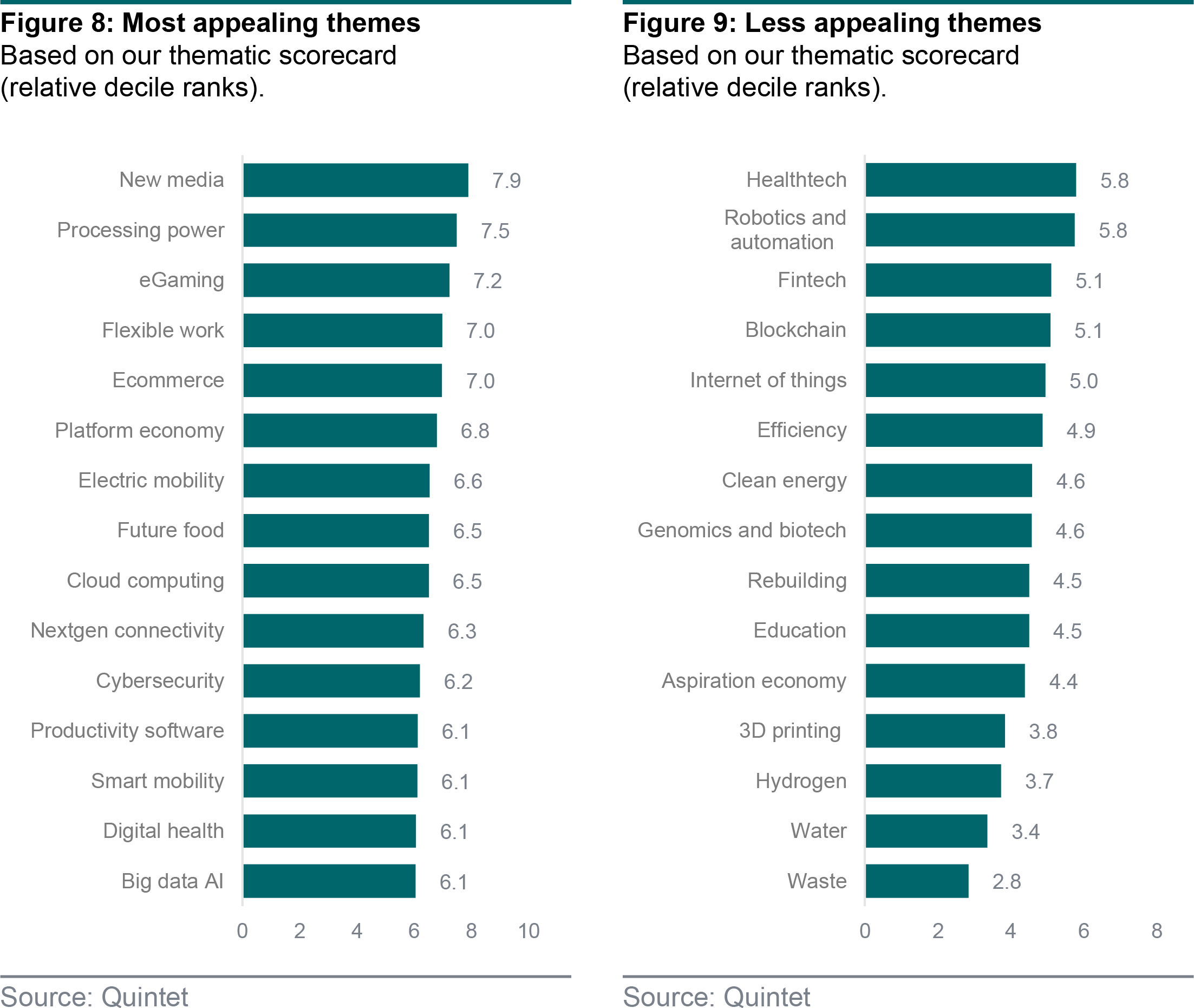
Another interesting way of analysing themes is to look at the earnings power and valuation of themes against major indices like the Nasdaq 100 and S&P 500 (figure 10 on page 6). For simplicity and comparability in this analysis we use the sum of forward revenue growth and EBIT margin to compare the earnings power of otherwise distinct themes. We use enterprise value to gross profit multiples to get a sense of valuation across themes. Although our thematic scorecard is our primary tool to rank themes, this earnings power versus valuation approach is helpful to compare the appeal of themes against the market and validate the results of our scores.
Themes such as new media, genomics and biotech, platform economy, nextgen connectivity and cybersecurity look appealing using this earnings power versus valuation analysis.
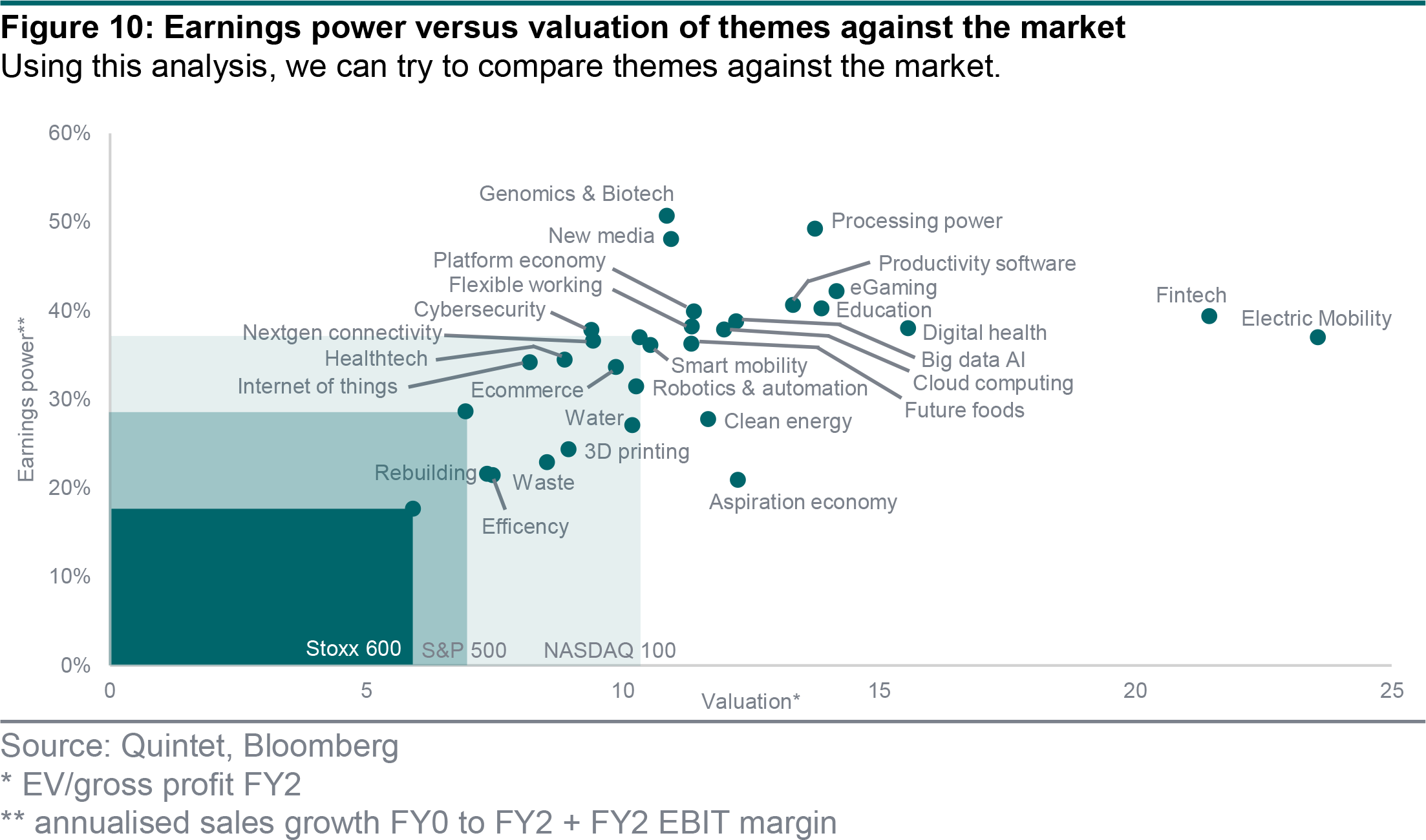
We believe our world will change at a more rapid pace this decade than the last decade due to numerous advances in digital, environmental and health technologies. There could be many new opportunities for investors as well as disruptions. Some of these changes will likely be foundational and the impacts profound, especially in the long term (5 to 10 year horizon). We think major strides are possible in digital innovations such as artificial intelligence and in health solutions such as genomics. There will also be immense shifts in our energy and mobility systems to make our way of life more sustainable for the planet. We believe younger generations will drive new products and services but older generations will also necessitate innovations in health and automation.
Thematic investing offers a way to navigate our rapidly changing world and the shifts in the global investment landscape. Our new thematic framework and proprietary quantitative approach allows us to assess the investment appeal of around 30 themes in a more systematic way, with less reliance on biases or intuition. A data-driven approach enhances our qualitative thematic research.
We believe it is vital to increase the exposure of portfolios towards new innovations and reduce exposure to old economy segments that face disruption risks in the long term.
Authors:
Pinaki Das Head of Thematic Research
Adam Lavelle Analyst
James Purcell Group Head of ESG Sustainable & Impact Investment
Bill Street Group Chief Investment Officer
This document has been prepared by Quintet Private Bank (Europe) S.A. The statements and views expressed in this document – based upon information from sources believed to be reliable – are those of Quintet Private Bank (Europe) S.A. as of 29 November 2021, and are subject to change. This document is of a general nature and does not constitute legal, accounting, tax or investment advice. All investors should keep in mind that past performance is no indication of future performance, and that the value of investments may go up or down. Changes in exchange rates may also cause the value of underlying investments to go up or down.
Copyright © Quintet Private Bank (Europe) S.A. 2021. All rights reserved.





